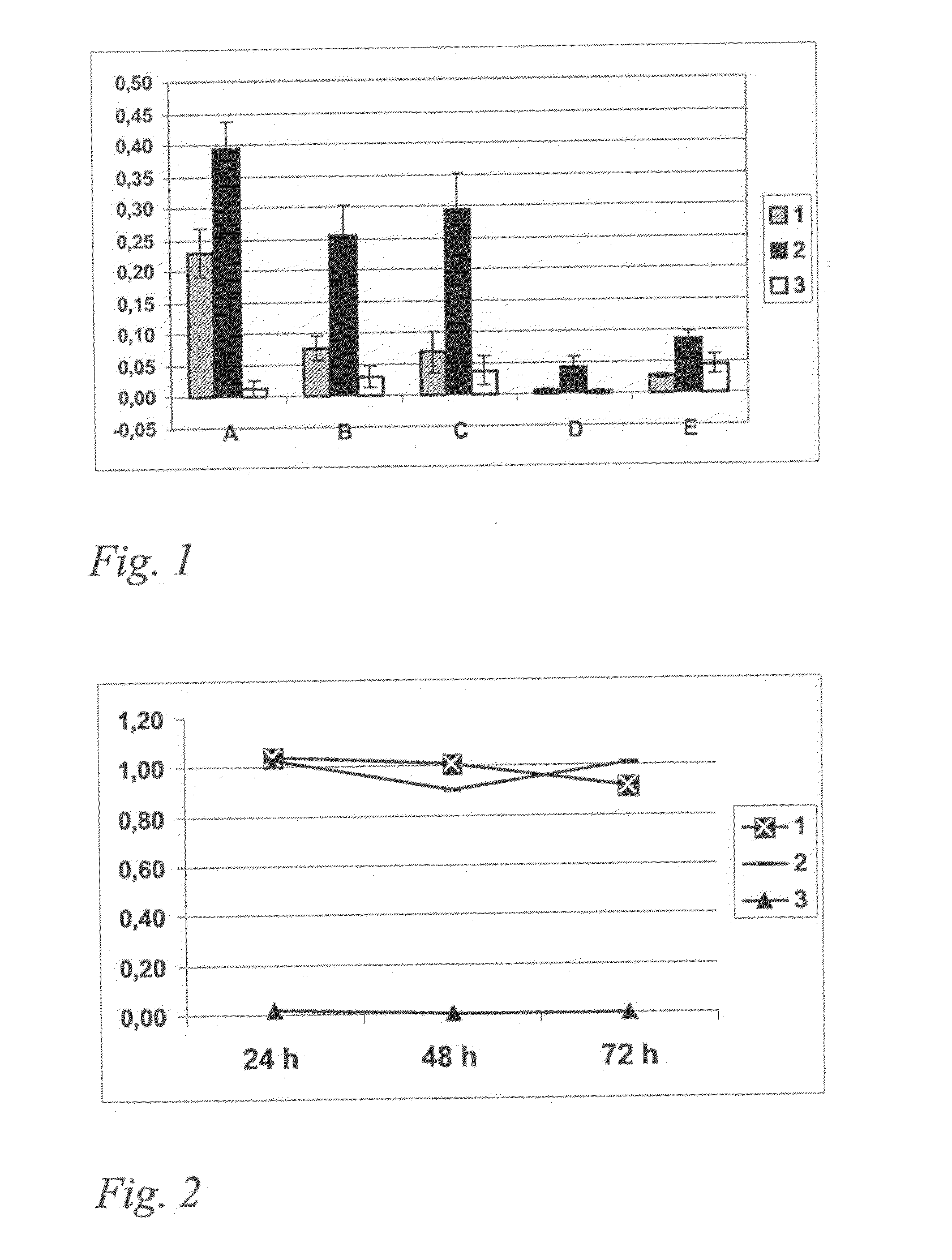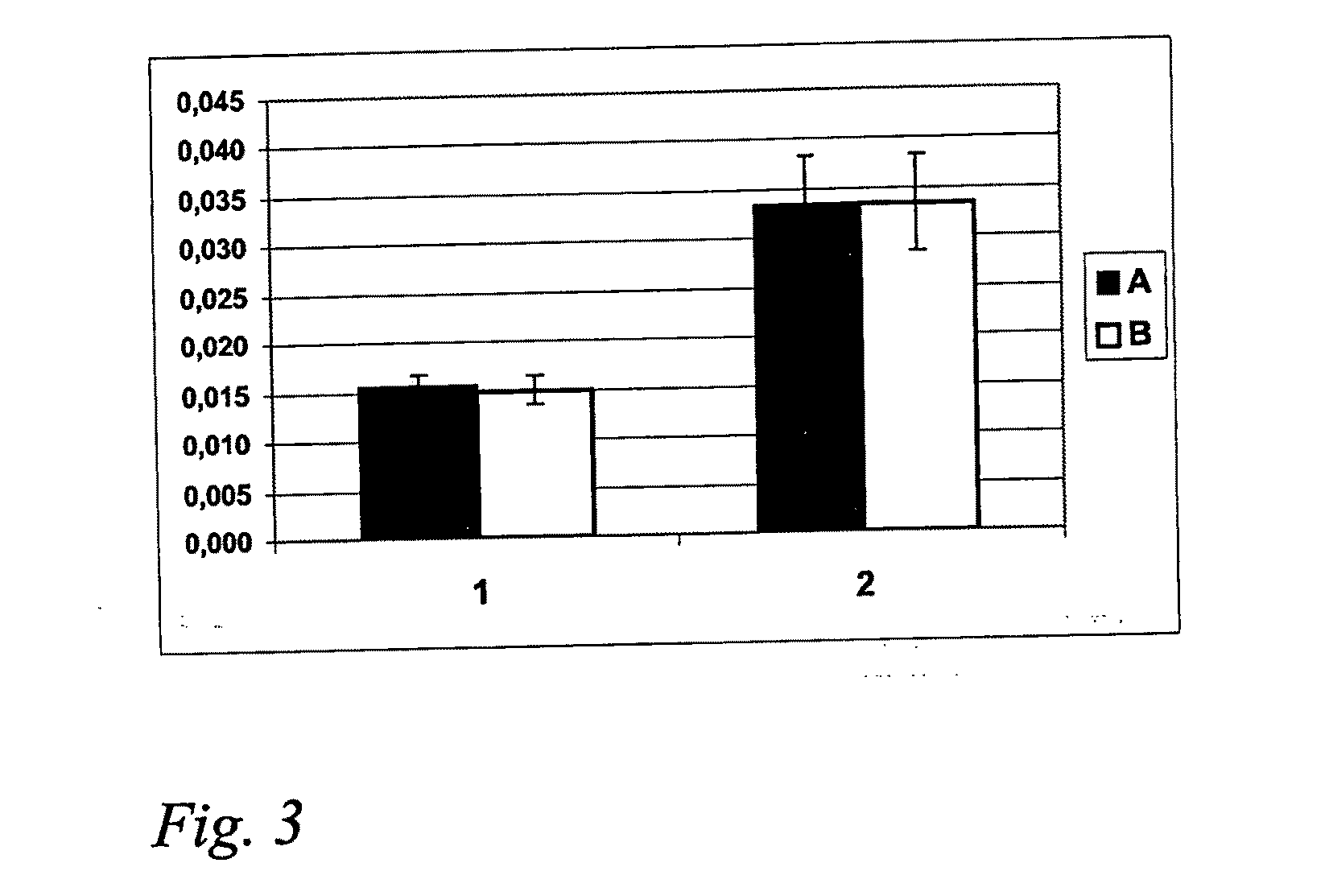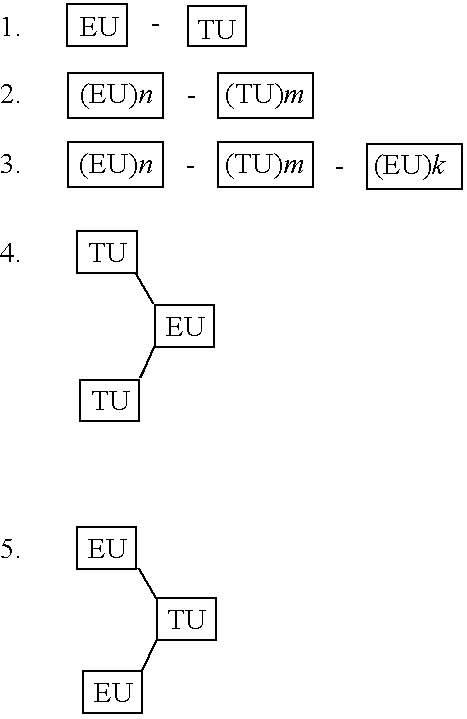Diagnostic and therapeutic agents
a technology of diagnostic and therapeutic agents, applied in the field of tumor targeting agents, can solve the problems of limited treatment methods of cancer, malignant tumors still require a huge number of lives every year, and rarely achieve curative treatment, so as to improve the stability or solubility of effector units, the effect of increasing the degree of differentiation
- Summary
- Abstract
- Description
- Claims
- Application Information
AI Technical Summary
Benefits of technology
Problems solved by technology
Method used
Image
Examples
example 1
General Screening Method for Bio-Panning of Patient Samples
[0184]Phage display libraries. Standard procedures according to Smith and Scott (1993) were used. Phage display libraries used for screening of clinical samples were cloned in fUSE5 vectors and were of the structure X7 and X10, thus they were linear containing seven or ten random amino acids. The libraries were used separately or as a mixture. The E. coli strain K91kan was used as host for phage amplification.
[0185]Subtractional panning. Bio-panning was started with depletion of phage clones binding to normal lung. Normal lung tissue taken from surgical lung resection, removed during dissection of tumor, was placed in ice cold DMEM (Dulbecco's medium) containing protease inhibitors (PI); 10 mM PMSF (Para-methyl-sulphonyl-fluoride), Aprotinin (10 mg / ml) Leupeptin (10 mg / ml). Tissue samples were minced with a razor blade in a small cell culture plate in 1 ml of DMEM-PI. The samples were transferred to an eppendorf tube and was...
example 2
Preparation of Synthetic Peptides
[0206]All peptide syntheses were carried out manually or by means of an automated synthesis instrument (either Applied Biosystems 433A or Advanced Chem Tech 396DC). The method was solid phase peptide synthesis based on N-FMOC protection and HBTU / HOBt / DIPEA activation. The synthesis resins employed were Rink amide MBHA resin, cysteamine-2-chlorotrityl resin or pre-loaded FMOC-amino acid Wang resin. In automated syntheses the standard operating procedures and reagents recommended by the manufacturers were employed.
[0207]The major reagents in these syntheses were from Applied Biosystems or from Novabiochem: Fmoc-Ala-OH (for ‘A’), Fmoc-Asp(OtBu)-OH (for ‘D’), Fmoc-Gly-OH (for ‘G’), Fmoc-Lys(tBoc)-OH (for ‘K’), Fmoc-Leu-OH (for ‘L’), Fmoc-Pro-OH (for ‘P’), Fmoc-Arg(Pbf)-OH (for ‘R’). The spacer amino acid: Fmoc-11-amino-3,6,9-undecanoic acid (for ‘PEG’) was purchased, University of Kuopio, Finland, and had been prepared as described previously (Boumrah et...
example 3
The Synthesis of Targeting Agent IS257
[0250]The synthesis of Ac-ARRPKLD-amide (IS257), i.e. CH3C(O)-Ala-Arg-Arg-Pro-Lys-Leu-Asp-NH2, was carried out manually according to the general method described above and was based on Rink amide MBHA Resin. The reagents (as described in the List of Reagents) were used according the sequence above in the direction of the syntesis (starting from Fmoc-Asp(OtBu)-OH, i.e. from right to left).
[0251]The identification of the product was based on MALDI-TOF mass spectrum: Observed positive ion M+1: 896.51 Da.
[0252]Calculated isotopic M: 895.54 Da.
PUM
| Property | Measurement | Unit |
|---|---|---|
| cyclic structure | aaaaa | aaaaa |
| fluorescent | aaaaa | aaaaa |
| luminescent | aaaaa | aaaaa |
Abstract
Description
Claims
Application Information
 Login to View More
Login to View More - R&D
- Intellectual Property
- Life Sciences
- Materials
- Tech Scout
- Unparalleled Data Quality
- Higher Quality Content
- 60% Fewer Hallucinations
Browse by: Latest US Patents, China's latest patents, Technical Efficacy Thesaurus, Application Domain, Technology Topic, Popular Technical Reports.
© 2025 PatSnap. All rights reserved.Legal|Privacy policy|Modern Slavery Act Transparency Statement|Sitemap|About US| Contact US: help@patsnap.com



